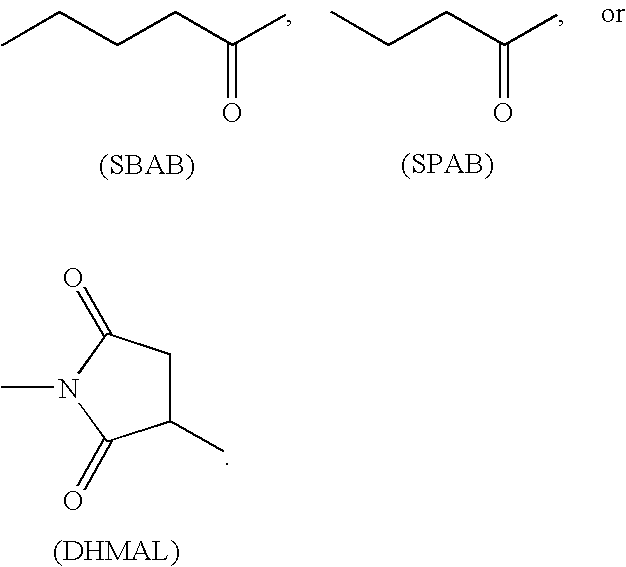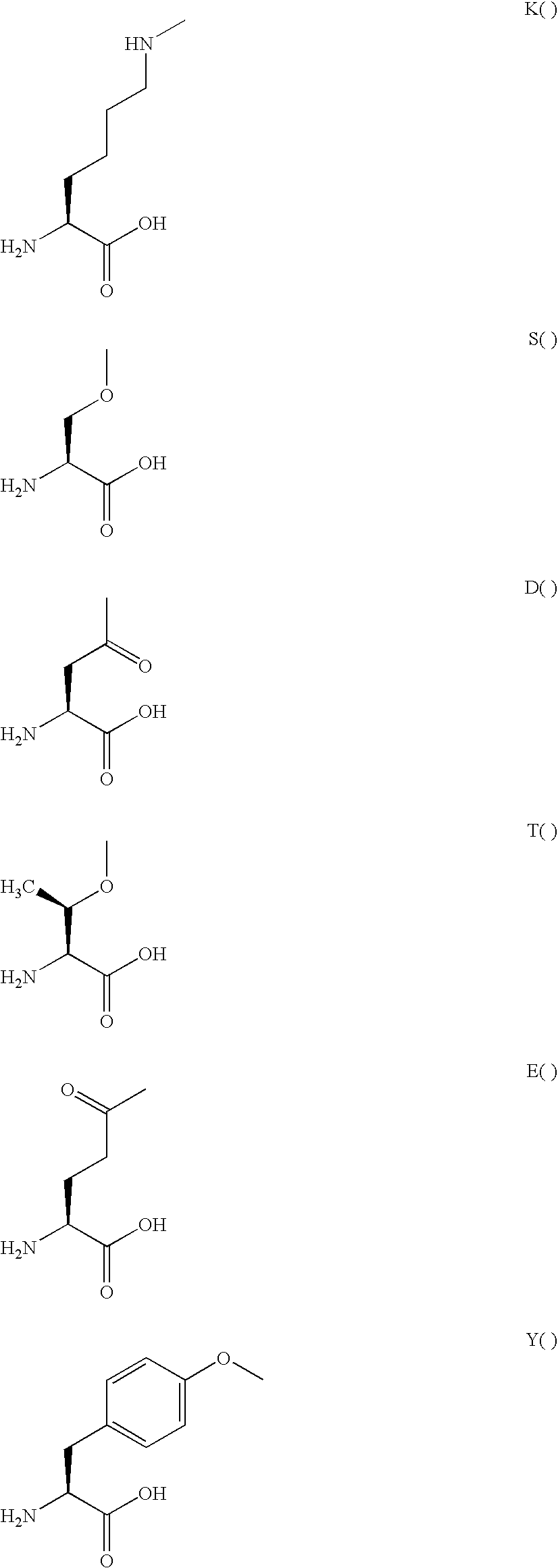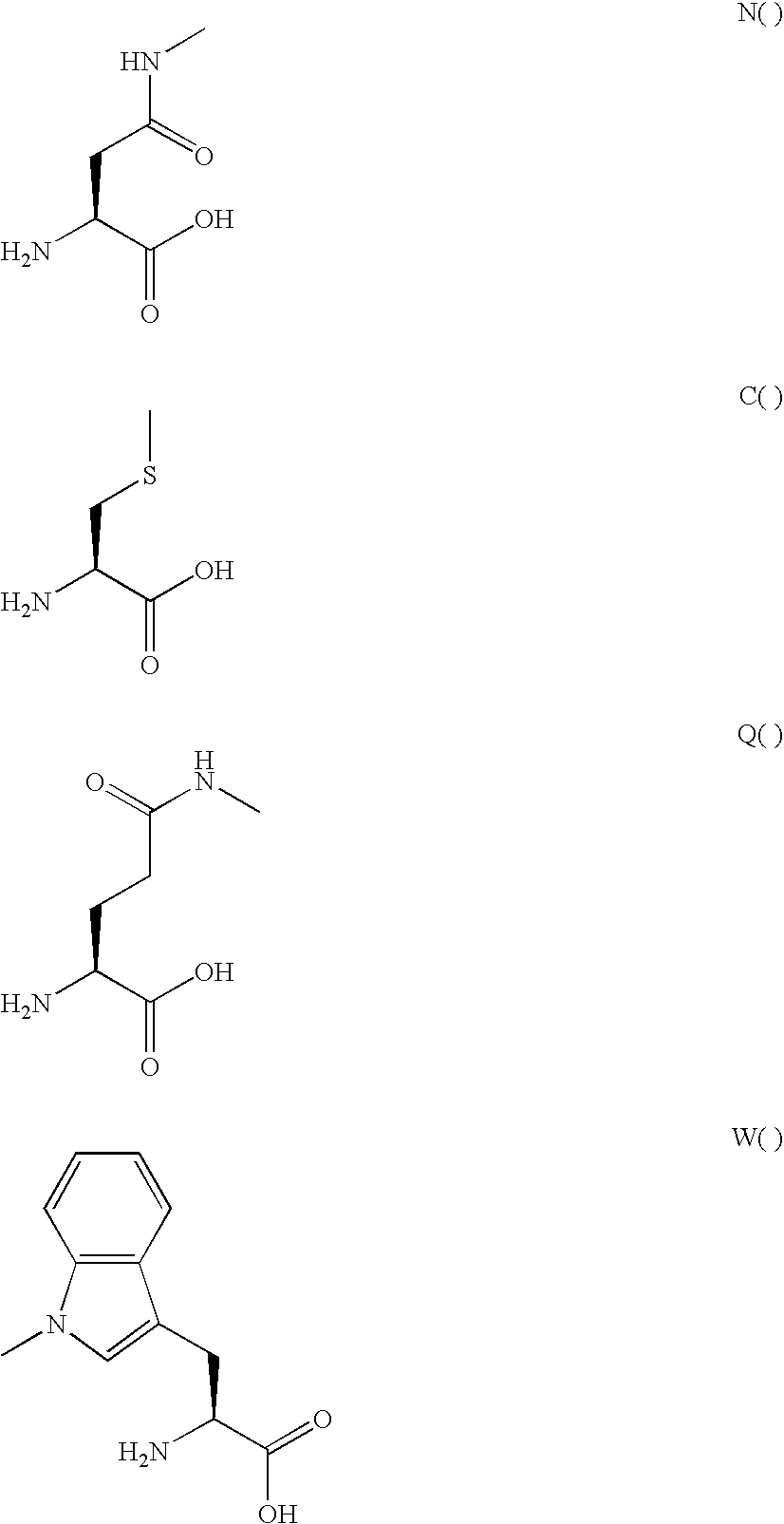GLP-2 derivatives
a technology of glucagonlike peptides and derivatives, applied in the field of new glucagonlike peptides, can solve the problems of short biological half-life (about 7 min), and achieve the effect of reducing clearan
- Summary
- Abstract
- Description
- Claims
- Application Information
AI Technical Summary
Benefits of technology
Problems solved by technology
Method used
Image
Examples
example 1
L17K(mPEGpropionyl) / K30R-GLP-2(1-33),wherein mPEG has a molecular weight of approximately 2 kDa
[0778]
1.a Synthesis of the protected peptidyl resin.
[0779] Boc-His(Boc)-Ala-Asp(OtBu)-Gly(Hmb)-Ser(tBu)-Phe-Ser(tBu)-Asp(OtBu)-Glu(OtBu)-Met-Asn(Trt) -Thr(tBu)-Ile-Leu-Asp(OtBu)-Asn(Trt)-Lys(Dde)-Ala-Ala-Arg(Pmc)-Asp(OtBu)-Phe-Ile-Asn(Trt) -Trp(Boc)-Leu-Ile-Gln(Trt)-Thr(tBu)-Arg(Pmc)-Ile-Thr(tBu)-Asp(OtBu)-Wang resin was performed according to the Fmoc strategy on an Applied Biosystems 433A peptide synthesizer in 0.25 mmol scale using the manufacturer supplied FastMoc UV protocols which employ HBTU or HATU mediated couplings in NMP, and UV monitoring of the deprotection of the Fmoc protection group. The starting resin (438 mg) used for the synthesis was Fmoc-Asp(OtBu)-Wang resin (Merck Biosciences GmbH, Germany. cat. #: 04-12-2047) with a substitution capacity of 0.57 mmol / g. The protected amino acid derivatives used were (2S)-6-[1-(4,4-Dimethyl-2,6-dioxo-cyclohexylidene)-ethylamino]-2-...
example 2
D3E / N16N(2-acetamido-2-deoxy-β-D-glucopyranosyl) / K30R-GLP-2(1-33)
[0784]
[0785] The peptide D3E / N16N(2-acetamido-2-deoxy-3,4,6-tri-O-acetyl-β-D-glucopyranosyl) / K30R-GLP-2(1-33) was prepared on a Applied Biosystems 433A Peptide Synthesizer, on a Wang-resin (loading 1.07 mmol / g) applying a standard FMOC strategy using HBTU / HOBT as coupling reagent. (S)-Nγ-(2-acetamido-2-deoxy-3,4,6-tri-O-acetyl-β-D-glucopyranosyl)-Nα-((9H-9-fluorenyl)methoxycarbonyl)asparagine (commercially available at e.g. Bachem) at position 16, FMOC-Asp(OtBu)-OH at position 15, and FMOC-Leu-OH at position 14 were coupled using HATU / HOAT. The peptide was cleaved from the resin and purified on HPLC. [0786] HPLC (Method B4): 7.16 min, 7.29 min, and 7.47 min. [0787] MALDI-TOF: [M]+: 4132.38, [M-Ac]+: 4089.89; [M-2 Ac]+: 4047.46.
[0788] The peptide was dissolved in a 5% solution of hydrazine in water (10 ml). This solution was stirred for 1 h. It was diluted with water (10 ml) and purified on a HPLC, using a gradient of...
example 3
D3E / M10L / N11N(2-acetamido-2-deoxy-β-D-glucopyranosyl)-GLP-2(1-33)
[0792]
[0793] The title compound was prepared as described for D3E / N16N(2-acetamido-2-deoxy-β-D-glucopyranosyl) / K30R-GLP-2(1-33).
[0794] HPLC: (Method: 02-A1): 13.07 min.
[0795] HPLC: (Method: 02-B4): 8.70 min.
[0796] MS: 1323 [M3++1], 992 [M4++1], 794 [M5++1], 662 [M6++1].
PUM
| Property | Measurement | Unit |
|---|---|---|
| molecular weight | aaaaa | aaaaa |
| molecular weight | aaaaa | aaaaa |
| body weight | aaaaa | aaaaa |
Abstract
Description
Claims
Application Information
 Login to View More
Login to View More - R&D
- Intellectual Property
- Life Sciences
- Materials
- Tech Scout
- Unparalleled Data Quality
- Higher Quality Content
- 60% Fewer Hallucinations
Browse by: Latest US Patents, China's latest patents, Technical Efficacy Thesaurus, Application Domain, Technology Topic, Popular Technical Reports.
© 2025 PatSnap. All rights reserved.Legal|Privacy policy|Modern Slavery Act Transparency Statement|Sitemap|About US| Contact US: help@patsnap.com



